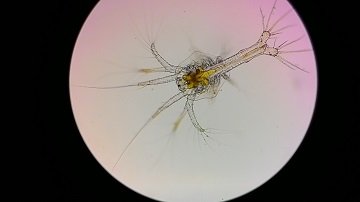Faculty Members of FPIK IPB, Created Probiotics, Prebiotics and Sinbiotics to Promote the Growth of Vaname Shrimp Larvae

Marine shrimp farming is an aquaculture business for the cultivation of marine shrimp or prawns for human consumption. Although traditional shrimp farming has been carried out in Asia for centuries, large-scale commercial shrimp farming began in the 1970s, and production grew steeply, particularly to match the market demands of the United States, Japan and Western Europe. Vaname shrimp (Litopenaeus vannamei) is one of the most widely cultivated fisheries commodities in Indonesia and the world. According to the World Food Agency (FAO) 2013, Indonesia is one of the world's largest exporter of vaname shrimp in the world besides Ecuador, Thailand, Vietnam, China, India and Malaysia. In shrimp farming, this life cycle occurs under controlled conditions. The reasons to do so include more intensive farming, improved size control resulting in more uniformly sized shrimp, and better predator control, but also the ability to accelerate growth and maturation. For that we need the production of shrimp vaname with the availability of shrimp seeds both in terms of quality in the amount and time is right. However, various problems such as disease attacks are still a major obstacle in hatcheries, which leads to low survival and growth of shrimp larvae.
But, presently, the biggest problem faced by the aquaculture industry worldwide is diseases caused due to various biological and non-biological agents. Among the groups of microorganisms that cause serious losses in shrimp culture, the best known are bacteria because of the devastating economic effects they have on affected farms. Bacterial diseases, mainly due to Vibrio, have been reported in penaeid shrimp culture systems, namely: taura syndrome virus (TSV), white spot syndrome virus (WSSV), yellow head virus (YHV), infectious hypodermal and hematopoietic necrosis virus (IHHNV) and infectious myonecrosis virus (IMNV).
Various efforts have been made to control the disease, among others with antibiotics, vaccines, immune stimulants and probiotics. Biosecurity measures practiced in intensive, controlled farming systems became more common, and antibiotic use decreased and became more responsible. Molecular biology is leading to a better understanding of shrimp and pathogen biology and the interaction between the two. The combined result of all of these developments has been a continuing increase in production of cultivated shrimp Disease control by using antibiotics has been banned, as it may lead to pathogen resistance to these antibiotics. Currently, many safer and more effective control methods have been developed as biocontrol agents, one of which is the application of probiotics. Probiotics are live microorganisms that may be able to help prevent and treat some illnesses.
Faculty member of the Faculty of Fisheries and Marine Sciences of Bogor Agricultural University (FPIK IPB), consists of Dr. Widanarni, Dr. Munti Yuhana and Prof. Muhammad Zairin Jr, took initiative to provide an alternative solution through "Application of Probiotics, Prebiotics and Sinbiotics to Increase Production of Vaname Shrimp Seeds". Currently, there are commercial probiotic products prepared from various bacterial species such as Bacillus sp., Lactobacillus sp., Enterococcus sp., Carnobacterium sp., and the yeast Saccharomyces cerevisiae among others, and their use is regulated by careful management recommendations. They have beneficial effects in diseases control and competes with various environmental stressors as well as to promote the growth of the cultured organisms.
What exactly are probiotics, prebiotics and synbiotics? Widanarni who is also a researcher from the Department of Aquaculture of FPIK IPB explained, probiotics is the addition of beneficial bacteria for shrimp such as bacteria Pseudoalteromonas sp. While prebiotics are food for the bacteria that is Mannan-oligosakarida (MOS). While the combination of probiotics and prebiotics is called synbiotics. Currently, probiotics are chosen as the best alternatives to these antimicrobial agents and they act as natural immune enhancers, which provoke the disease resistance in shrimp farm.
The results showed that by giving prebiotic in vaname shrimp larvae with dose of 12 mg / L could increase survival of vaname shrimp larva by 91,67% compared to without prebiotic which only 67,78%. Giving probiotics Pseudoalteromonas sp. With a concentration of 108 CFU / mL is also able to increase the survival of vaname shrimp larvae of 92.78 percent compared with no probiotics. While the application of synbiotics also showed the best results.
The application of probiotics, prebiotics and synbiotics to vaname shrimp larvae also provides positive effects such as increased feed digestibility, increased immune response, increased shrimp growth, increased digestive enzyme activity and increased beneficial bacteria present in vaname shrimp intestine. the effectiveness of probiotics, prebiotics and synbiotics in enhancing the immune responses of vannameishrimp (Litopenaeus vannamei) to Vibrio harveyi infection. In the future the application of probiotics, prebiotics and sinbiotics will be processed into dried form for easies utilization for mass scale vaname shrimp hatchery industries. (Wied)


